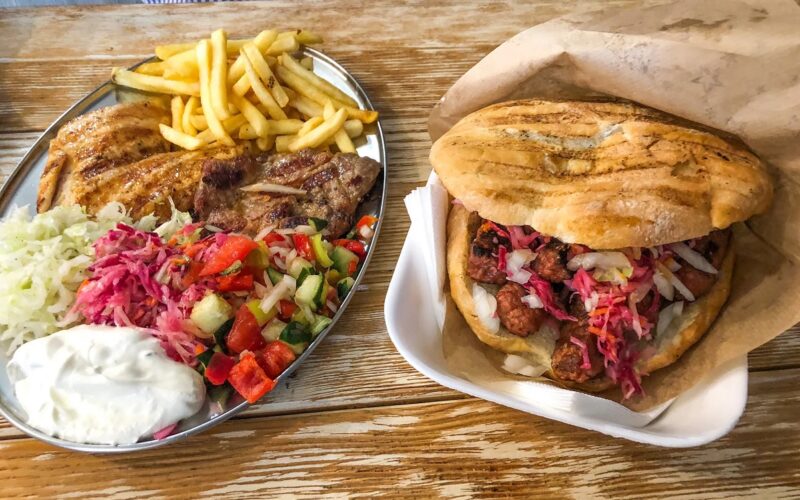Montenegro, a picturesque country nestled in the Balkans, is not only known for its stunning landscapes but also for its delectable cuisine. Montenegrin food is a fusion of various culinary influences, resulting in a unique and flavorful gastronomic experience. From succulent cured meats to mouthwatering desserts, the country offers a wide array of traditional dishes that delight locals and tourists alike.
When it comes to Montenegrin cuisine, it’s all about savoring hearty, homemade meals that reflect the country’s rich cultural heritage. The culinary traditions of Montenegro have been shaped by the diverse influences of neighboring countries such as Italy, Turkey, and Serbia, resulting in a melting pot of flavors and techniques.
Montenegrin Cuisine: A Brief Overview
Montenegrin cuisine is characterized by its simplicity and reliance on fresh, locally sourced ingredients. The use of high-quality produce, meats, and seafood is a common thread in Montenegrin dishes. With a focus on natural flavors and preserving the authenticity of ingredients, Montenegro offers a culinary experience that is both satisfying and memorable. Come to Montenegro to taste all this dishes.
Traditional Montenegrin Dishes
Njeguški Pršut
One of the most iconic Montenegrin dishes is Njeguški Pršut, a dry-cured ham that originates from the village of Njeguši. This delicacy is made from locally raised pork and is aged for several months, resulting in a distinct flavor and tender texture. Njeguški Pršut is often enjoyed thinly sliced as an appetizer or paired with local cheeses and olives.
Kačamak
Kačamak is a traditional Montenegrin dish made from cornmeal, potatoes, and cheese. It is a hearty and comforting dish that is often served as a main course. The cornmeal and potatoes are cooked together until creamy, then mixed with cheese, creating a delightful blend of flavors and textures.
Kajmak
Kajmak is a creamy dairy product commonly enjoyed in Montenegro. It is made by slowly simmering milk until the water content evaporates, leaving behind a rich and indulgent cream. Kajmak is often served as a spread on bread or as an accompaniment to grilled meats, adding a velvety touch to any dish.
Riblja Čorba
Riblja Čorba, or fish stew, is a beloved dish along the coastal regions of Montenegro. Made with an assortment of fresh fish, vegetables, and aromatic herbs, this flavorful soup is a true taste of the Mediterranean. The combination of tender fish and fragrant broth makes Riblja Čorba a must-try for seafood enthusiasts.
Influences on Montenegrin Food
Montenegrin cuisine has been shaped by various cultural influences throughout history. Here are three significant influences that have contributed to the country’s culinary heritage:
Ottoman Influence
The Ottoman Empire once ruled over parts of Montenegro, leaving a lasting impact on the local cuisine. The introduction of ingredients such as lamb, yogurt, and phyllo dough has greatly influenced the flavors and cooking techniques in Montenegro.
Mediterranean Influence
Montenegro’s proximity to the Adriatic Sea has resulted in a strong Mediterranean influence on its cuisine. Fresh seafood, olive oil, and an abundance of aromatic herbs are prominent components in many Montenegrin dishes, adding a touch of brightness and distinctiveness.
Balkan Influence
Being a part of the Balkan region, Montenegro shares culinary similarities with its neighboring countries. Grilled meats, hearty stews, and a love for dairy products are all common characteristics found in Balkan cuisine, including Montenegro.
Popular Montenegrin Desserts
No culinary journey through Montenegro is complete without indulging in the country’s delectable desserts. Here are two popular sweet treats to satisfy your sweet tooth:
Priganice
Priganice are small, deep-fried dough balls that are typically served as a dessert or a breakfast treat. These fluffy delights are often dusted with powdered sugar and accompanied by a variety of homemade jams or honey.
Kolač od Smokava
Kolač od Smokava, or fig cake, is a traditional Montenegrin dessert made from dried figs, walnuts, and honey. This dense and rich cake is a delightful blend of sweet and nutty flavors, providing a satisfying end to any meal.
Montenegrin Beverages
To complement the diverse range of flavors in Montenegrin cuisine, a variety of beverages play a significant role. Here are two notable Montenegrin drinks:
Rakija
Rakija is a popular fruit brandy that is widely consumed in Montenegro. It is typically made from plums, grapes, or other fruits, and is known for its strong flavor and high alcohol content. Rakija is often enjoyed as an aperitif or a digestive, and it holds a special place in Montenegrin cultural traditions.
Vranac Wine
Vranac is a dark, full-bodied red wine that is native to Montenegro. This robust wine is made from the Vranac grape, which thrives in the region’s fertile vineyards. With its rich aroma and complex flavors, Vranac wine is the perfect accompaniment to Montenegrin cuisine, especially grilled meats and hearty stews.
Eating Customs and Traditions in Montenegro
In Montenegro, meals are often seen as a time for family and friends to come together and share the joys of good food. Long, leisurely lunches and dinners are common, where multiple courses are served and savored. Hospitality is highly valued, and guests are warmly welcomed into homes and restaurants with open arms.
Montenegrin food is a true reflection of the country’s rich cultural history and geographical diversity. From savory cured meats to mouthwatering desserts, Montenegro offers a culinary adventure that tantalizes the taste buds and leaves a lasting impression. Whether you’re exploring the coastal towns or the mountainous regions, be sure to immerse yourself in the flavors and traditions that make Montenegrin cuisine so special.
